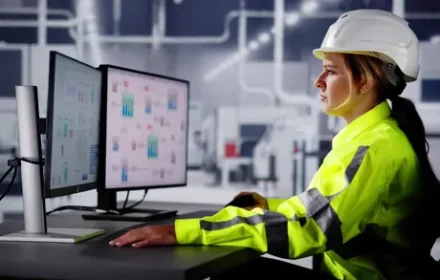
Topical Roundup: August/September 2025
Industrial Automation Trends: Key Developments Reshaping Manufacturing
Open Process Automation Advances
Open Process Automation systems gain significant traction. The OPA initiative transforms industrial automation architecture. ExxonMobil’s Lighthouse Project demonstrates real-world application. This system automates a resin plant in Louisiana. According to MarketsandMarkets, the industrial automation market will reach $306 billion by 2027. Open standards drive this growth substantially.
European Battery Manufacturing Expansion
The European Union invests heavily in battery production. Six lithium-ion factories receive €852 million funding. This supports the EU’s Battery Value Chain Enhancement Plan. The total budget reaches €30 billion. Europe aims to compete in the 800 GWh global battery race. This creates opportunities for automation suppliers.
Industrial AI and Foundation Models
Artificial Intelligence transforms manufacturing operations. Industrial Foundation Models bridge expertise gaps. They meet manufacturing precision requirements. AI enhances IIoT signal processing significantly. Key benefits include:
- Noise reduction in sensor data
- Real-time anomaly detection
- Predictive maintenance capabilities
- Enhanced communication reliability
Cybersecurity Maturity and Operational Safety
Process maturity becomes crucial for cybersecurity. Many organizations lack repeatable security processes. Aligning security with business objectives proves essential. Modern alarm management strategies evolve dramatically. Intelligent safeguards replace basic notifications. This reshapes operational safety protocols.
Digital Twin Implementation Challenges
Companies face fundamental digital twin obstacles. Document control precedes 3D model success. Common barriers include data disorganization and lack of governance. Proper document digitization remains critical. Operational alignment ensures digital twin effectiveness. Many organizations overlook these foundational requirements.
Manufacturing Skills and Workforce Development
Tariffs highlight workforce skill gaps. Digital manufacturing technologies offer solutions. Additive manufacturing gains importance. Companies must invest in training programs. The manufacturing skills shortage affects global competitiveness. Strategic workforce development becomes imperative.
Automation Investment and Equipment Strategy
Robot orders increase by 4.3% in early 2025. Revenue grows 7.5% according to A3 reports. North American companies order 17,635 robots. Equipment failure causes 80% of unplanned downtime. Manufacturers face modernization versus migration decisions. Each approach offers distinct advantages for different scenarios.
Industry Product Innovations and Updates
Siemens introduces Virtual Product Expert for CNC. This provides on-demand programming assistance. ABB launches global NEMA motor solutions. HVACR systems consume 40% of commercial building energy. Energy efficiency becomes top priority. New motor designs address this critical need.
Expert Analysis: Automation Implementation Strategy
World of PLC perspective: Successful automation requires strategic planning. Companies should prioritize cybersecurity maturity. They must address foundational data management first. Workforce development supports technology adoption. Open standards enable future flexibility. These elements create sustainable automation success.
Practical Implementation Recommendations
Manufacturers should consider these key steps:
- Assess current cybersecurity maturity levels
- Evaluate open automation architecture benefits
- Develop comprehensive workforce training programs
- Implement robust document management systems
- Establish clear equipment modernization criteria
For complete industrial automation solutions and professional guidance, explore World of PLC’s comprehensive service portfolio.
Frequently Asked Questions
What are the main benefits of Open Process Automation?
OPA reduces vendor lock-in and increases system flexibility. It enables better integration of new technologies. This approach lowers long-term maintenance costs significantly.
How can manufacturers improve cybersecurity maturity?
Start by documenting all security processes thoroughly. Align security measures with business objectives. Implement regular security training and awareness programs.
What factors determine equipment modernization versus replacement?
Consider equipment age, maintenance costs, and technology gaps. Evaluate integration capabilities with existing systems. Analyze total cost of ownership for both options.







